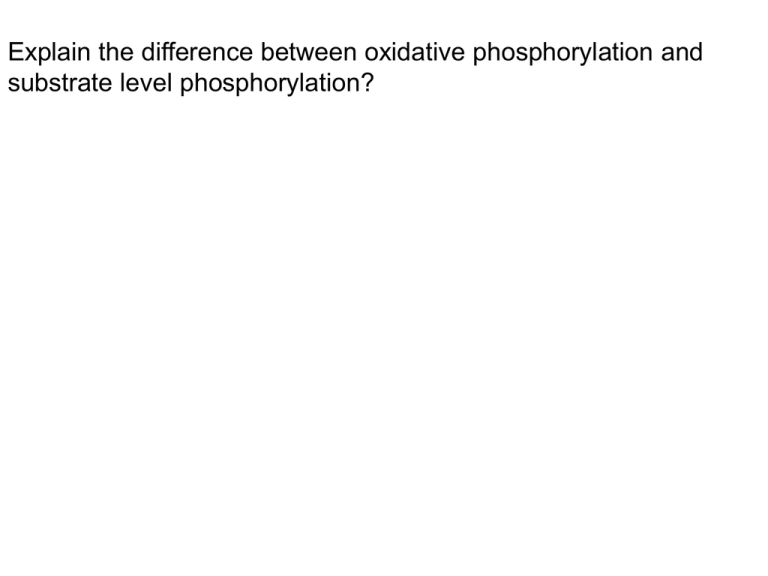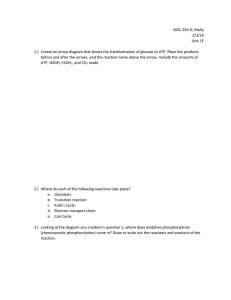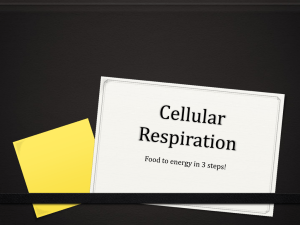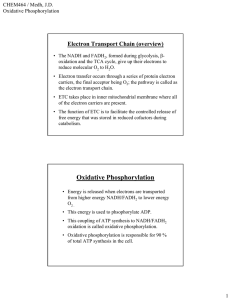Document
advertisement

Explain the difference between oxidative phosphorylation and substrate level phosphorylation? Substrate-level phosphorylation occurs during Glycolysis and the Kreb's Cycle and involves the physical addition of a free phosphate to ADP to form ATP. Oxidative phosphorylation, on the other hand, takes place along the electron transport chain, where ATP is synthesized indirectly from the creation of a proton gradient and the movement of these protons back accross the membrane through the protein channel, ATP synthase. As the protons pass through, ATP is created. Explain the roles of cytochrome c1 and cytochrome bh/l in the oxidation of ubiquinol to ubiquinone. Are proton pumped across the inner membrane? ubiquinol transfers 1 e to c1 (thru R Fe-S) the semiquinone donates 1 e to to BL to get (thru bH) to reduc 1 semiquinone to make ubiquinone. Thus the b’s act as a recycling center for 1 e as the other goes on to IV The energy for ATP synthesis is generated by the movement of protons from the ______________ side of the inner mitochondrial membrane establishing a(an) _____________ gradient. A) intermembrane; pH B) intermembrane; electrical potential C) matrix; sodium ion D) matrix; pH E) None of the above The energy for ATP synthesis is generated by the movement of protons from the ______________ side of the inner mitochondrial membrane establishing a(an) _____________ gradient. A) intermembrane; pH B) intermembrane; electrical potential C) matrix; sodium ion D) matrix; pH E) None of the above Ans: D Section: 18.4 Provide a brief description of oxidative phosphorylation It is the process in which ATP is formed, due to the transfer of electrons from NADH or FADH2 to O2 by a series of electron carriers in the inner membrane of the mitochondria Explain why less ATP is made from the reoxidation of FADH2 as compared to NADH Complex II is not a proton pump. When electrons flow from FADH2 to oxygen, as catalyzed by complex II, complex III, and complex IV, fewer protons are pumped out of the matrix as compared to NADH. Thus, fewer ATP molecules are ultimately made In the malate-aspartate shuttle, how is oxaloacetate regenerated since there is no transporter for oxaloacetate across the inner membrane? Inside the mitochondria, the malate is converted to OAA by malate dehydrogenase. The OAA is converted to aspartate, which can be transported out of the mitochondria. The aspartate can then be converted to oxaloacetate. The aspartate-oxaloacetate reactions require glutamate and a-ketoglutarate.






